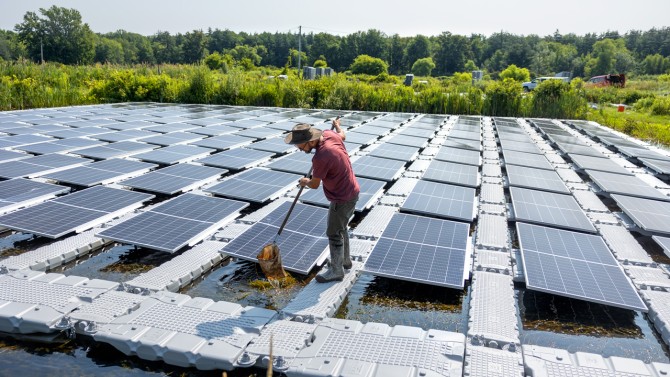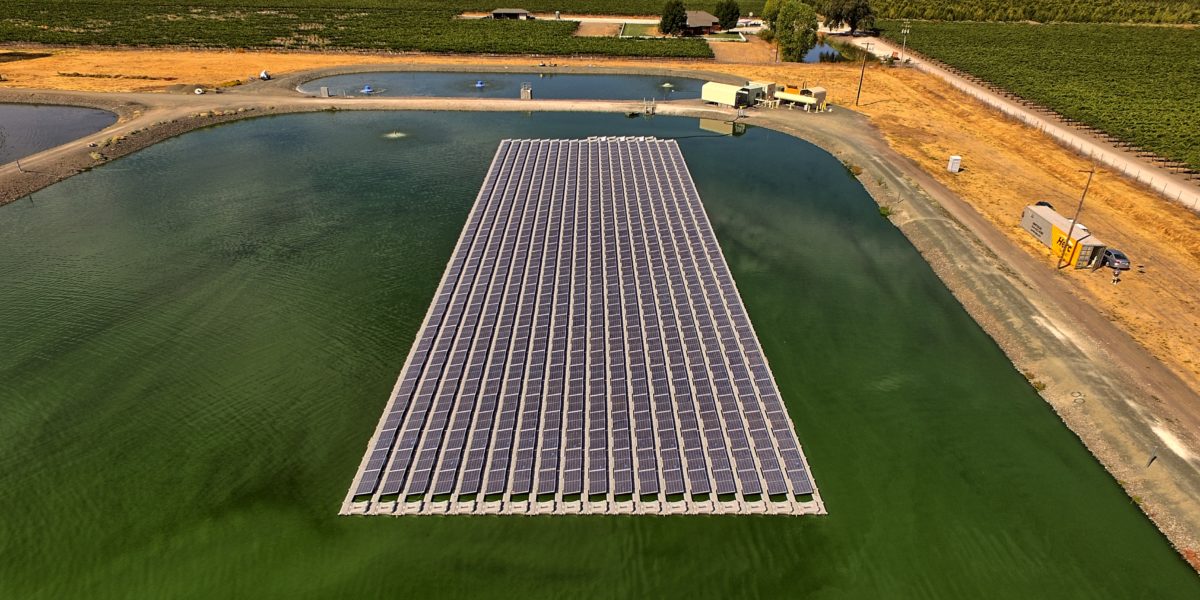As more states adopt green energy solutions to power skylines and public transportation, stakeholders continue to explore solar infrastructure options that won’t exacerbate (or introduce) damage to natural habitats and wildlife.
A group of researchers at Cornell University are exploring one such solution: preserving land for agriculture and wildlife by placing floating photovoltaic (PV) panels on lakes rivers and reservoirs.
Since the middle of June, Cornell and U.S. Geological Survey Ecologist Steve Grodsky, Ph.D., have been working with students to monitor how their hand-linked panels affect aquatic life across three ponds. Other researchers from Cornell’s College of Agriculture and Life Sciences are joining the team to research how solar panels affect the relationship between the host microbe and its environment and also how the panels affect the bioacoustics of the ponds. This branch of sciences looks at sound production dispersion and reception in animals.

Located at the Cornell Experimental Pond Facility in New York state, the project comprises 378 solar panels and 1,600 floats. “The floats are made from plastic and the PV panels are made from the same materials you would see in recent terrestrial solar [crystalline-silicon],” said Grodsky.
The equipment is favored for its affordability and buoyancy. However, researchers hope to examine how these solar panels affect factors like the water’s natural nitrogen and phosphate levels and life quality for microbes macroinvertebrates (snails and crayfish) macrophytes (aquatic plants) and fish. They will use gas-trapping monitors to collect this data, as ponds naturally release greenhouse gasses when organic matter in the water grows and dies.
“It’s not about slowing down renewable energy development; it’s about incorporating scientific rigor to make the deployment of floating solar development more sustainable,” Grodsky said.
Ciel & Terre, a French company that specializes in developing floating solar panels, is partnering with the researchers. Ciel & & Terre is the developer of one of the largest floating solar projects in the U.S. The 4.4. MW floating array in Sayreville, New Jersey, just outside of New York City, is sited on a pond at a water treatment facility. It offsets the power use at the facility as well as at other government facilities.
Interest in floating solar is rising, especially with the “Protect our Waters and Expand Renewables on our Reservoirs Act” introduced by Rep. Paul Tonko, D- N.Y., and Rep. Jared Huffman, D-Calif., in December 2022.
The bill encourages clean energy production on federal water reservoirs and examining the deployment of floating solar to create renewable energy. With states like North Carolina, New York and New Jersey already deploying their versions, stakeholders must balance protecting biodiversity above and below water. Doing so will unlock the possibility of saving 5 million acres of land and providing 10 percent of domestic energy needs – which National Renewable Energy Researchers say floating solar can do.
This content is protected by copyright and may not be reused. If you want to cooperate with us and would like to reuse some of our content, please contact: editors@pv-magazine.com.








By submitting this form you agree to pv magazine using your data for the purposes of publishing your comment.
Your personal data will only be disclosed or otherwise transmitted to third parties for the purposes of spam filtering or if this is necessary for technical maintenance of the website. Any other transfer to third parties will not take place unless this is justified on the basis of applicable data protection regulations or if pv magazine is legally obliged to do so.
You may revoke this consent at any time with effect for the future, in which case your personal data will be deleted immediately. Otherwise, your data will be deleted if pv magazine has processed your request or the purpose of data storage is fulfilled.
Further information on data privacy can be found in our Data Protection Policy.